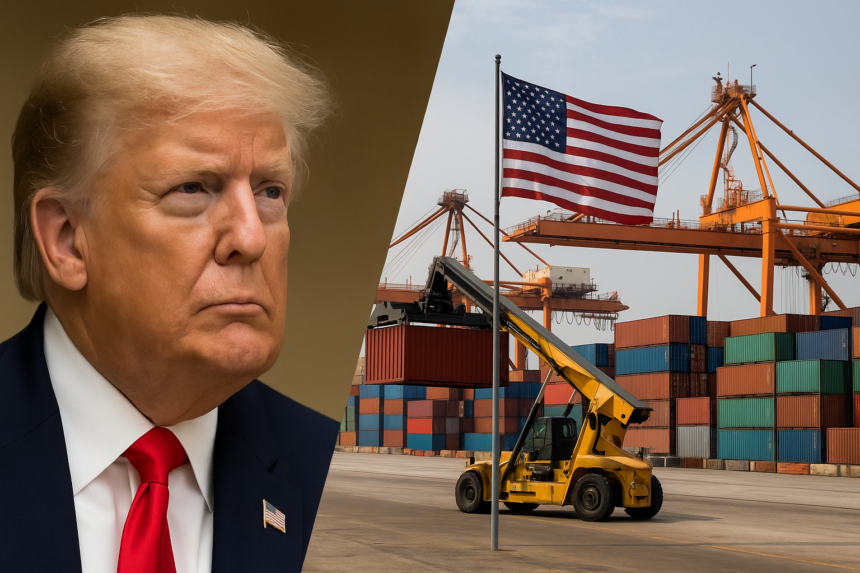The ongoing trade wars, particularly those stemming from Donald Trump’s tariffs, continue to ripple through industries, especially the electronics and tech sectors. Companies such as Apple, Amazon, Microsoft, and Wyze have felt pressured by rising prices, delays, and increasing costs that affect both businesses and consumers alike. These tariffs, primarily targeted at Chinese imports, alter how businesses source products and impact their bottom lines. TechFyle dives into the implications of these tariffs and how different companies are navigating the resulting economic changes.
What’s Happening & Why This Matters
The Trump tariffs, which began in 2018 and continued aggressively in Spring 2025, have impacted various industries. While the tariffs were intended to bring about fairer trade practices and tackle the trade deficit with China, their effects are far-reaching, causing increased prices, disrupted supply chains, and economic uncertainty. Let’s examine how some of the biggest companies respond to these challenges.
Apple Faces a Heavy Toll
These tariffs have been a serious concern for Apple. Apple CEO Tim Cook has acknowledged the challenges, revealing that the company could face $900 million in additional costs due to the tariffs on Chinese-manufactured products. Although Apple has diversified some iPhone production to countries like India, it still relies heavily on Chinese factories for components and assembly. As a result, Apple is experiencing higher costs that are starting to affect its profit margins.
Apple’s flagship product, the iPhone, faces production delays and higher prices, which could eventually be passed on to the consumer. This creates a tough dilemma for Apple: maintain affordable pricing while absorbing extra costs or raise prices, potentially driving customers away.

Microsoft Raises Xbox Prices
Similarly, Microsoft is adjusting to new economic realities. Due to the 145% tariff on electronics imported from China, Microsoft has raised prices for its Xbox Series X consoles and games. The price increase, which can go up to $100 per unit, reflects the higher manufacturing cost in China, especially when the company cannot avoid the additional fees. Despite these increases, Microsoft remains focused on maintaining a competitive edge in the global market, but these price hikes add a layer of complexity to its international strategy.
Amazon’s Strategy to Cope

For Amazon, the tariffs have led to higher product costs, as third-party sellers are affected by import taxes. CEO Andy Jassy mentioned that Amazon has been stocking up inventory to avoid the impact of tariffs, but as these stocks run low, consumers will see higher prices. While the company’s retail operations remain unaffected in the short term, longer-term impacts are inevitable.
Amazon has also been criticized for its pricing strategy amid the tariff pressures, as it tries to balance consumer demand with increased shipping costs. The higher prices could be a factor that affects Amazon’s brand loyalty in the long run.
Wyze Faces Extreme Tariff Costs
Wyze, the security camera company, has also been hit hard by tariffs. The company recently tweeted about its first tariff bill, revealing that it imported $167,000 worth of floodlights but ended up paying $255,000 in tariffs. This extreme discrepancy, reflecting Trump’s 145% tariffs, demonstrates how burdensome the new import costs can be on small-to-medium-sized enterprises (SMEs).

To combat these rising costs, Wyze has already begun moving manufacturing out of China to countries like Vietnam and Malaysia, where tariffs are paused. However, Wyze also faces challenges from critics who argue that the company should move its manufacturing back to the U.S.. In response, Wyze emphasized that manufacturing in China allows it to maintain lower prices, ultimately benefiting consumers. However, with tariffs continuing to rise, Wyze may have no choice but to raise prices for consumers down the line.
TF Summary: What’s Next
As tariffs continue to wreak havoc on markets, consumers, and companies as the broader economic effects are spreading. Price hikes, shipping delays, and uncertainties are becoming commonplace for businesses dealing with these increased import costs. While companies like Apple and Wyze are looking to shift manufacturing away from China, how these tariffs will sort the global marketplace remains to be seen.
The long-term effects on consumer prices and global supply chains will depend on how companies adjust to these trade policies. Additionally, the ongoing negotiations around trade deals between the U.S. and other countries may influence whether the future tariff burden will lighten or increase.
As the Trump administration continues to address the fallout of these trade policies, companies and consumers alike will need to brace for continued price fluctuations and supply chain uncertainty.
— Text-to-Speech (TTS) provided by gspeech


